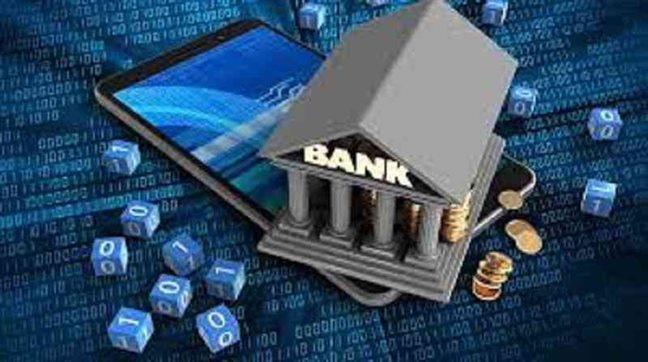Digital Disruption in Banking Nepal and its Impact on Competition
25th August 2022, Kathmandu
It has not been long since the practice of electronic payment started in Nepal. The data shows that even in a short period, the business through electronic means has taken a big leap.
The data of Nepal Rastra Bank, Payment System Department for June 2079 showed that there were 25 million 64 thousand 308 mobile banking transactions in a single month. According to the department, there was a turnover of 1 trillion 63 billion 255 million rupees.
In Shrawan 2077, through mobile banking, 59 lakh 23 thousand 411 transactions worth Rs. 18 crores 39 lakh 30 thousand were transacted. Not only mobile banking, but financial transactions through Connect IPS and wallet also seem to have increased significantly.
In Shrawan 2079, the number of transactions through wallets reached over one and a half million. On July, 17 billion 752 million transactions were made through 162 million 6 thousand 356 transactions through the wallet.
In Shrawan 2077, through 1 crore 1 lakh 77 thousand 889 transactions, there was a turnover of 7 billion 759 million.
In Shrawan 2077, there was a turnover of 47 billion 367 million out of 633 thousand 134 transactions from Connect IPS, while in June 2079, there was a turnover of 3 trillion 69 billion 22 billion 3 million from 42 lakh 70 thousand 99 transactions.
Real Time Gross Settlement System (RTGS) has been operational for large and commercial transactions not long ago. However, according to the data of Nepal Rastra Bank, there was a transaction of 43 trillion 49 billion through RTGS in one month of June 2079.
According to Rashtra Bank, the amount was transacted through a total of 81 thousand 817 transactions. In Shrawan, through 34 thousand 616 transactions, a transaction of 12 trillion 24 billion was made through RTGS.
Although the National Bank has made large transactions mandatory through the RTGA system, it seems that institutional and large amounts of transactions are also done through Electronic Check Clearing and IPS.
Through electronic check clearing provided by Nepal Clearing House, a transaction worth 8 trillion 51 billion was made through 14 lakh 86 thousand 551 transactions in June 2079 only. Whereas, in June 2078, through 14 lakh 40 thousand 472 transactions, 9 trillion 88 billion, and in Shrawan 2077, through 1 million 39 thousand 330 transactions, 6 trillion 57 billion were traded.
Nepal Clearing House’s Chief Executive Officer (CEO) Nileshman Singh Pradhan says that check clearing has been done every one and a half hours recently.
Similarly, through IPS in July 2077, through 3 lakh 47 thousand 854 transactions, 1 trillion 56 billion transactions were done. Similarly, in June 2078, through 11 lakh 64 thousand 481 transactions, 2 trillion 99 billion transactions were made. However, at the end of June 2079, the number of transactions increased to 13 lakh 22 174, but the transaction amount decreased to 2 trillion 76 billion.
The National Bank has adopted a policy of discouraging cash transactions. Governor Mahaprasad Adhikari has announced that QR base payment will be carried forward as a campaign.
The campaign started by Sanima Bank from Naxal’s vegetable market has now spread to businesses from Thela Gadha.
Former banker Bhuvan Dahal says that with the increase in electronic transactions in Nepal, cash ‘circulation’ has also decreased along with the crowd of customers at the bank counters. He said that the corona epidemic in Nepal has proved to be a ‘turning point for electronic financial transactions.
However, in June 2078, about 6 trillion 70 billion worth of notes were in circulation, but in June 2079, they dropped to 6 trillion 16 billion.
Such transactions have increased due to the development of electronic payment infrastructure, the incentives for this, and the increasing practice of the general public in using electronic payment devices.
In the current monetary policy, it is mentioned that institutional coordination will be done to celebrate the financial year 079/80 as the year of promotion of electronic payment transactions.
As mentioned in the budget, it is mentioned in the monetary policy to amend the National Bank Act and the Act on Banks and Financial Institutions to establish a fully digital bank and to revise the private arrangements for introducing foreign investment in payment-related institutions.
Sunil KC Banker (CEO) of NMB Bank, who is also the Vice President of Nepal Bankers Association, says that banks started investing in digital banking before the Covid.
“Rastra Bank has also adopted the same policy, the restrictions against Covid-19 helped to increase digital banking practices,” he said, “Government offices including Malpot are not yet digitalized.” The ‘eco system’ required for digital transactions is yet to be prepared.
CEO KC suggests that the government and regulatory agencies should work harder.
Growing digital banking users
With the increase in the number of digital banking users, transactions have also improved. Dahal, a former banker, says that digital banking users have increased due to the fear spread by the citizens due to Covid-19 and that has proved to be a milestone for electronic transactions.
According to Rashtra Bank, the number of wallet users was 62 lakh 74 thousand 129 in Shrawn 2077, while in Shrawn 2079, the number of wallet users reached 1 crore 36 lakh 75 thousand nine hundred ninety-three.
Similarly, mobile banking users have also increased from 1 crore 14 lakh 64 thousand 867 in Shrawn 2077 to 1 crore 83 lakh 7 thousand Two hundred fifty-five in Shrawan 2079.
During the same period, internet banking users increased from 10 lakh 45 thousand 558 to 16 lakh 84 thousand 310. Similarly, Connect IPS users have increased from 5 lakh 35 thousand 615 to 8 lakh 96 thousand 334.







